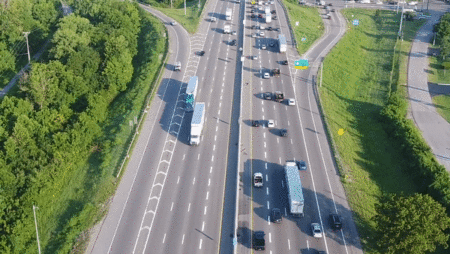Researchers from Edith Cowan University (ECU) and the University of Manitoba have developed an automated program that can identify cardiovascular problems and fall risks from routine bone density scans.
This could make it considerably easier to detect serious health issues before they become life-threatening.
The algorithm, developed by ECU research fellow Dr. Cassandra Smith and senior research fellow Dr. Marc Sim, works by analyzing vertebral fracture assessment (VFA) images taken during standard bone density tests, which are often part of treatment plans for osteoporosis.
By assessing the presence and extent of abdominal aortic calcification (AAC) in these scans, the program can quickly flag patients at risk of heart attack, stroke, and dangerous falls.
What’s truly impressive is the speed at which the algorithm works. While an experienced human reader might take five to six minutes to calculate an AAC score from a single scan, the machine learning program can predict scores for thousands of images in less than a minute.
That level of efficiency could be a significant benefit for healthcare systems looking to screen large populations for hidden health risks.
The need for such screening is evident. In the research, Dr. Smith found that a staggering 58% of older individuals who underwent routine bone density scans had moderate to high levels of AAC.
Even more concerning, one in four of those patients were completely unaware of their elevated risk.
“Women are recognized as being under-screened and under-treated for cardiovascular disease,” Dr. Smith noted. “This study shows that we can use widely available, low-radiation bone density machines to identify women at high risk of cardiovascular disease, which would allow them to seek treatment.”
But the algorithm’s predictive power doesn’t stop at heart health. Using the same program, Dr. Sim discovered that patients with moderate to high AAC scores were also at greater risk of fall-related hospitalizations and fractures compared to those with low scores.
“The higher the calcification in your arteries, the higher the risk of falls and fractures,” Dr. Sim explained. While traditional fall risk factors like previous falls and low bone density are well-known, vascular health is rarely considered.
“Our analysis uncovered that AAC was a very strong contributor to falls risks and was actually more significant than other factors that are clinically identified as falls risk factors.”
As with any new technology, there are questions to be answered and challenges to overcome before this kind of AI-assisted screening becomes standard practice.
First and foremost, the algorithm will need to be validated in larger, more diverse patient populations and integrated seamlessly into existing clinical workflows.
However, if those challenges can be met, a simple bone scan – something millions of older adults already undergo regularly – could become an early warning system for some of the most common and devastating health problems we face.
The post AI algorithm predicts heart disease risk from bone scans appeared first on DailyAI.
Source: Read MoreÂ



